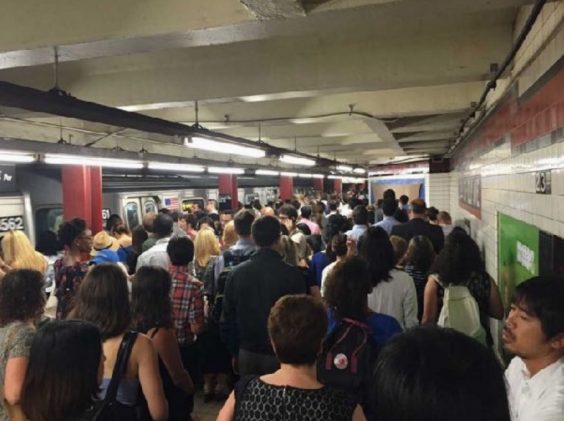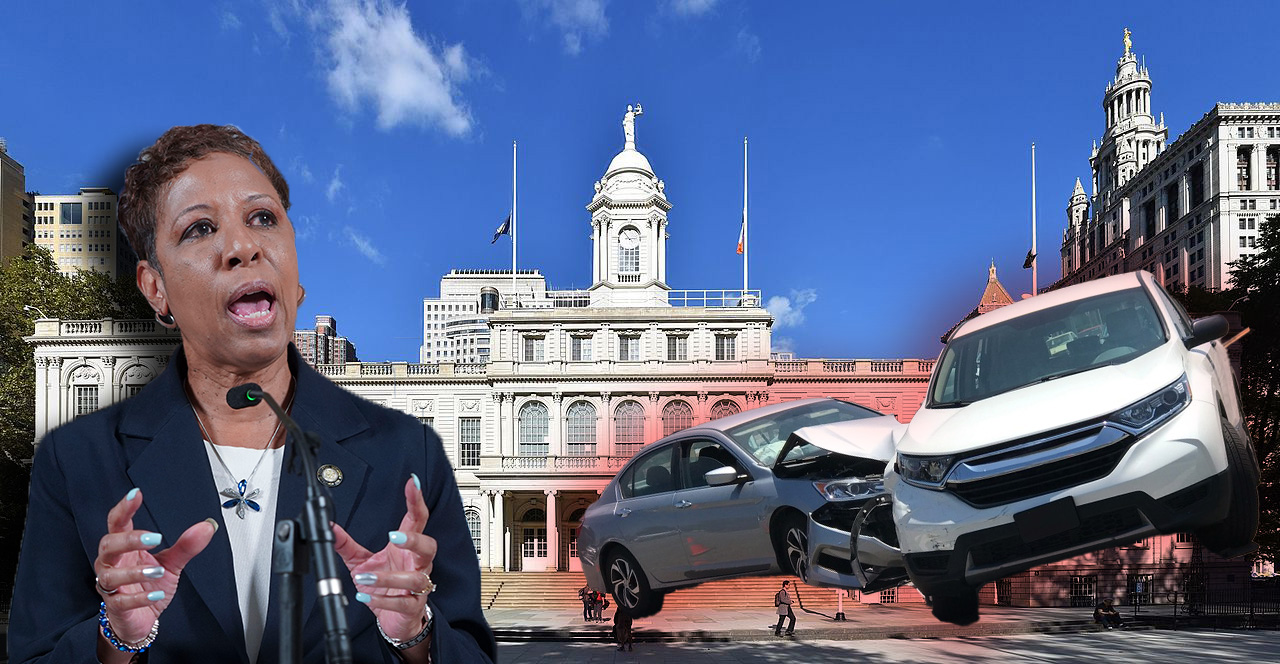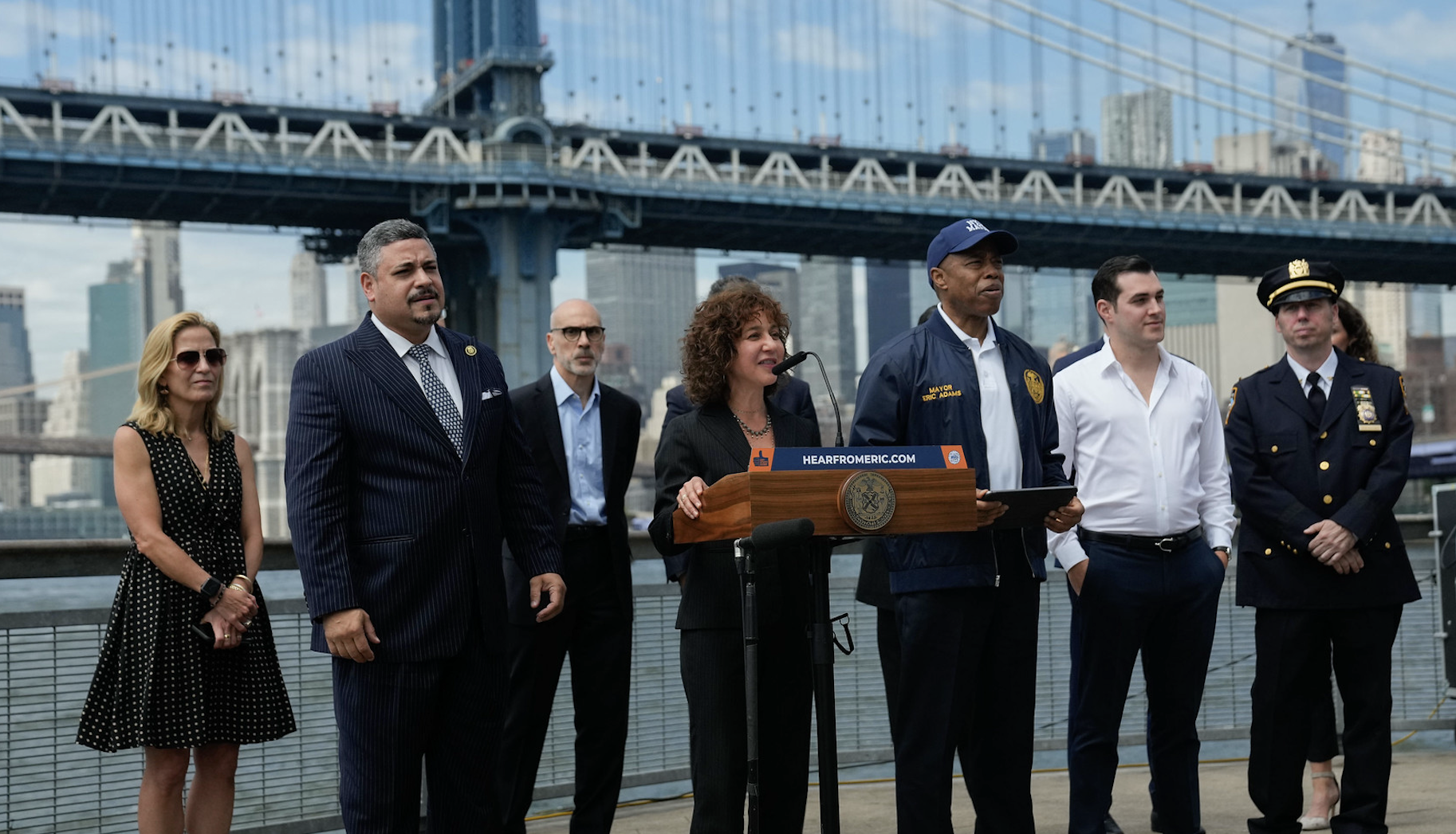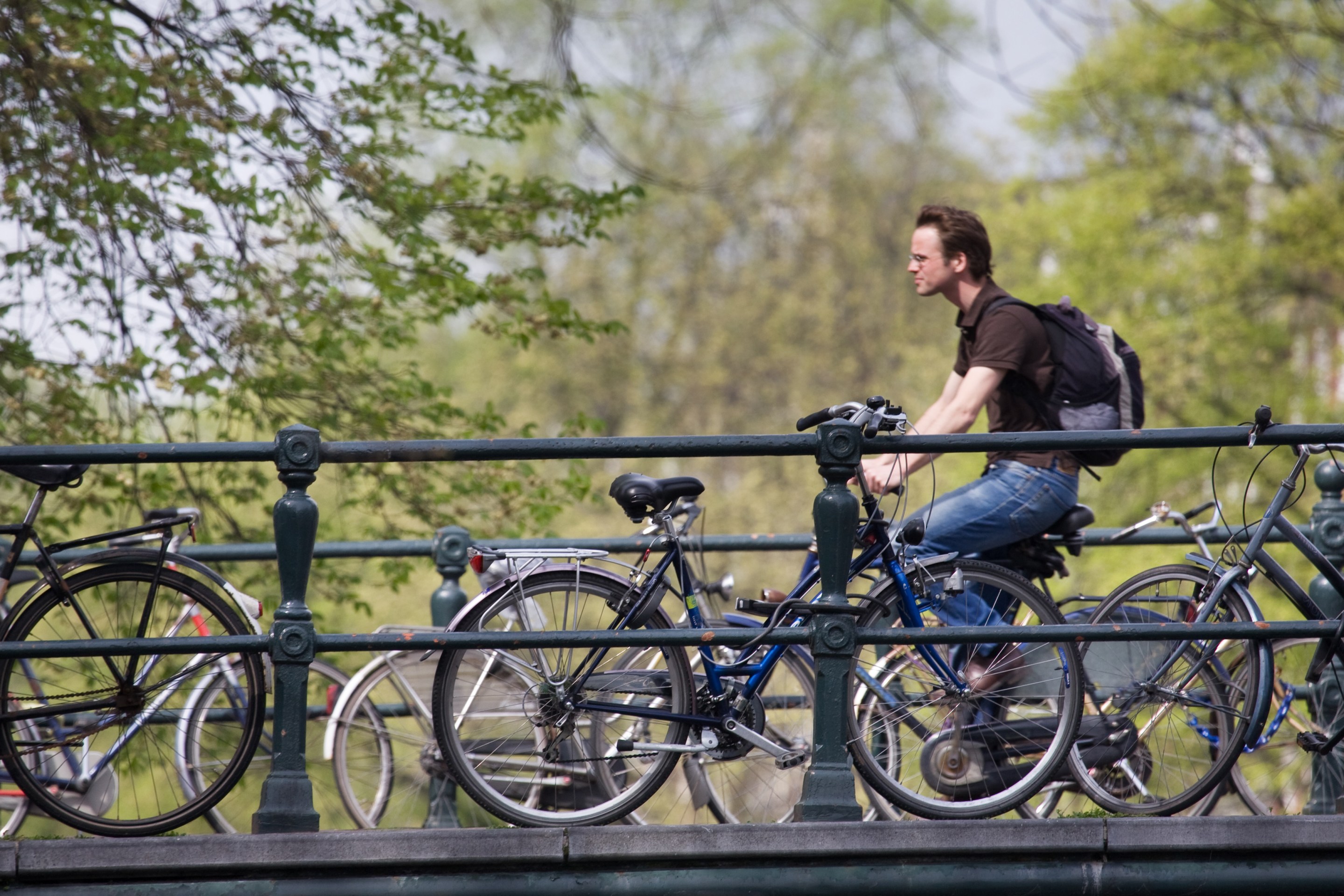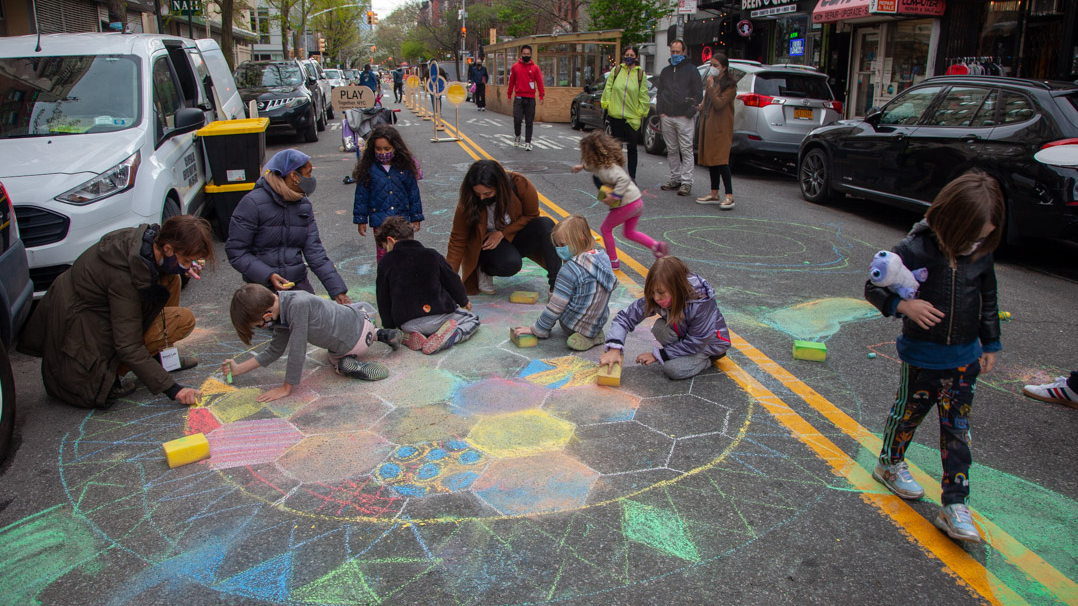Shortly before the holidays, DOT and the MTA outlined how they plan to move hundreds of thousands of people during the L train shutdown. The highlights include a transitway on the central portion of 14th Street, bus priority treatments on the approaches to the Williamsburg Bridge, and a service plan for frequent shuttle buses across the East River.
But a lot can still go wrong if the agencies don't get the details right. Still unknown, for instance, is how much priority transit and biking will get on the Grand Street approach to the Williamsburg Bridge.
Here's a look at four other aspects of the plan that will determine whether it succeeds or fails.
Will bus service be good enough to avoid nightmare crowding at subway stations?
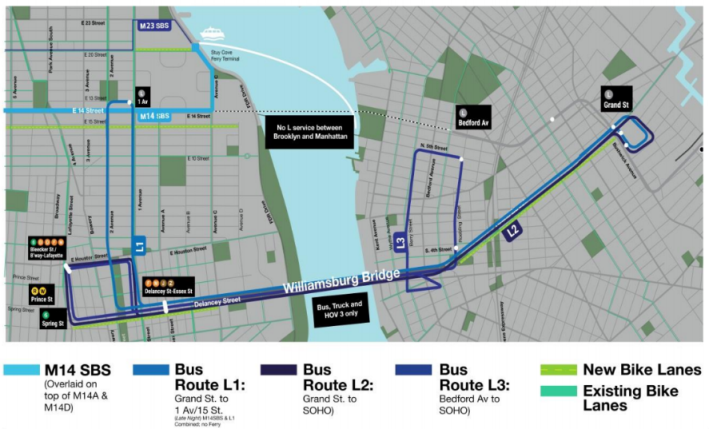
This is the big overarching question.
The MTA expects between 70 and 80 percent of affected L train riders to switch to other subway lines. Improvements on substitute lines, like more frequent trains and improved station access, will be necessary to accommodate these riders. But the quality of the shuttle bus services will also have a huge impact on riders who opt for the subways.

If the shuttle buses are too slow or unreliable, more people will try to squeeze on the J/M/Z, the G, and other trains. Even with the subway improvements the MTA is planning for, that could put too much stress on some parts of the system.
MTA Managing Director Ronnie Hakim told the City Council last month that the agency plans to "increase station capacity" at Marcy Avenue, Broadway Junction, and Metropolitan Avenue, add stairs at Court Square, and open closed station entrances at Hewes Street and Metropolitan Avenue.
These steps will help. But at a few key stations, there are hard limits on the size of the crowds that can be accommodated, no matter what the MTA does between now and April 2019.
The Court Square station complex, where the G train connects to the 7, E, and M lines, will especially feel the crunch. As the 7 train advocacy group Access Queens has highlighted, these stations already suffer from bottlenecked entryways and concourses, as well as crowded platforms [PDF].
On the J/M/Z in Williamsburg, platforms at the Hewes and Marcy stations will be stretched to the limit, even taking into account more frequent trains.
The strain could be too much at Marcy, according to BRT Planning International's Walter Hook, who thinks the demand will overwhelm the already-crowded platform. "The people who don't [fit on] the J are going to need an alternative," Hook told Streetsblog.
In the MTA's shuttle bus service plan, the two routes from the Grand Street L train station won't make any stops before crossing into Manhattan. That will make them useless for many people who might opt for the bus instead of the J/M/Z. Unless the MTA adds another shuttle bus stop on Borinquen Place near Union Avenue, Hook says, crowding at the Marcy station could be untenable.
Beyond the stop pattern in Brooklyn, bus service as a whole needs to be a compelling travel option. That brings up the next three questions.
Will bus fare collection and boarding be optimized for speed?
If riders can't get on and off buses quickly and seamlessly, service quality will falter, and people will look for other ways to get around. Fare collection and bus stop design are critical elements of the plan.
The MTA has not said much about fare collection on the East River shuttle buses and 14th Street. Last month, Hakim would only tell the City Council that the agency is "looking at various fare strategies" which are "still evolving."
DOT says fare collection on new bus services will be done with off-board payment machines, the same as Select Bus Service routes. This process allows riders to board buses quickly at any door, but getting a paper receipt before boarding is not always a smooth process.
SBS-style fare payment may not be good enough. At subway transfer points like Grand Street or Bleecker Street, crowds could create boarding bottlenecks.
One possible solution is to cordon off pre-paid fare zones around bus stops, Hook said. But making the shuttles free altogether would be the most effective way to ensure bus service moves quickly.
The design concept for 14th Street includes bus bulbs, which speed up the boarding process. An important variable is the height of the bulbs, says Hook. If they're high enough to allow true level boarding, the bus service will be more fully accessible to passengers in wheelchairs and faster overall.
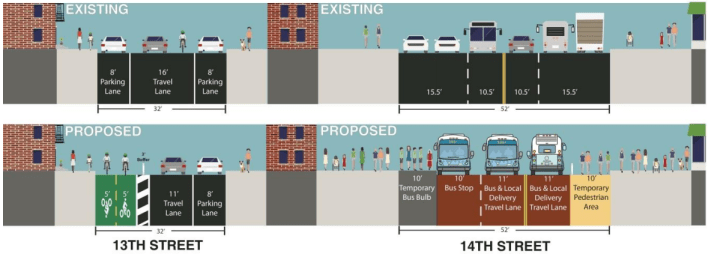
Will the MTA use high-capacity buses?
Articulated, three-door buses can move more people than standard two-door buses. On the shuttle bus routes, a fleet of the MTA's typical 40-foot buses would struggle to handle the anticipated volume of riders during the L shutdown, says Hook.
Repeated inquiries to the MTA about the bus models that will be used for its shuttle service went unanswered.
How will DOT define "peak hour"?
Last month, DOT Commissioner Polly Trottenberg said that the 14th Street busway and HOV3+ restrictions on the Williamsburg Bridge would be in effect during "peak hour," but DOT has yet to define exactly what that means.
All along the affected L train corridor in Manhattan and Williamsburg, there are a mix of uses and high travel demand outside of typical rush hours, including nights and weekends. Merchants around the Bedford L station, who rely on a flow of customers from Manhattan on the weekends, are especially worried.
What's more, toggling back and forth between different rules could create uncertainty that degrades the system even during times when transit priority is in effect. StreetsPAC Executive Director Eric McClure recommended to the City Council that bus-only and HOV restrictions should be in place 24/7. Consistent rules throughout the day will make the whole system function more predictably and reliably at all times.
Correction: An earlier version of this post said it wasn't clear whether local M14 buses would have off-board fare collection on 14th Street. DOT says they will. The erroneous passage has been removed from the post.
